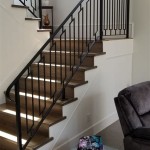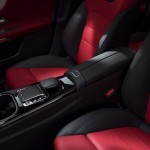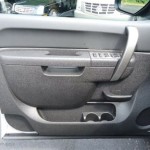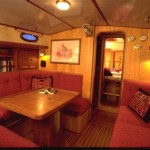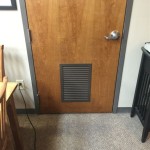Upgrading Your 1988-1998 Chevy Truck Interior: A Comprehensive Guide
The 1988-1998 Chevrolet and GMC C/K series trucks, often referred to as the "OBS" (Old Body Style) or "GMT400" trucks, are enduring classics. While their rugged exteriors and reliable powertrains are well-regarded, the interiors can often show their age. Upgrading the interior of these trucks can significantly enhance the driving experience, improve comfort, and increase the vehicle's overall value. This article will provide a comprehensive guide to upgrading the interior of your 1988-1998 Chevy truck, covering various aspects from seating and flooring to technology and aesthetics.
Before embarking on any upgrade project, it is crucial to assess the existing condition of the interior. This involves a thorough inspection of all components, including the seats, carpet, dashboard, door panels, headliner, and trim pieces. Identify areas that are worn, damaged, or simply outdated. This assessment will help prioritize upgrades and determine the budget required for the project. Consider taking detailed photographs to document the existing condition before starting any work. These photos can be valuable for reference during the upgrade process and for potential future documentation or sales purposes.
Key Point 1: Enhancing Comfort and Aesthetics: Seats and Flooring
The seats and flooring are two of the most frequently used components of any vehicle interior, and they often exhibit the most wear and tear. Upgrading these elements can dramatically improve both the comfort and the appearance of the truck's interior.
Seating Options: The original seats in these trucks, especially those equipped with cloth upholstery, are prone to wear, fading, and sagging. Several upgrade options are available. One option is to reupholster the existing seats. This involves removing the old fabric and replacing it with new material, allowing for customization of color and texture. A professional upholstery shop can provide a high-quality finish, but DIY kits are also available for those with experience and the necessary tools. Another option is to replace the original seats with aftermarket seats. These seats often offer enhanced support, adjustability, and modern styling. Bucket seats, racing seats, and even seats sourced from newer vehicles can be adapted to fit the GMT400 platform. When selecting aftermarket seats, ensure compatibility with the original mounting points or plan for modifications to the floor pan.
Flooring Solutions: The original carpet in these trucks is susceptible to stains, tears, and fading. Replacing the carpet is a relatively straightforward upgrade that can significantly improve the interior's appearance. Pre-molded carpet kits are available specifically for the 1988-1998 Chevy truck, making installation easier. These kits are typically available in various colors and materials, including automotive-grade carpet and vinyl. Another option is to use a spray-in bedliner material on the floor. This provides a durable, waterproof, and easy-to-clean surface, making it ideal for trucks that are used for work or off-roading. When installing new carpet or bedliner, ensure that the floor pan is clean and free of rust or debris. Applying a sound-deadening material to the floor before installing the new flooring can also help reduce road noise and improve the overall comfort of the cabin.
Upgrading the seats and flooring involves careful removal of the existing components, proper preparation of the underlying surfaces, and secure installation of the new materials. Take your time and follow the manufacturer's instructions carefully to ensure a professional-looking and long-lasting result.
Key Point 2: Modernizing the Dashboard and Instrument Panel
The dashboard and instrument panel are central to the truck's interior functionality and aesthetics. Upgrading these components can improve visibility, add modern features, and enhance the overall driving experience.
Gauge Clusters: The original gauge clusters in the 1988-1998 Chevy trucks can suffer from faded needles, dim lighting, and inaccurate readings. Several upgrade options are available. One option is to replace the existing gauge cluster with a new or refurbished unit. These units often feature brighter LED lighting and updated designs. Another option is to install aftermarket gauges. These gauges can provide more accurate readings and offer additional information, such as oil pressure, coolant temperature, and boost pressure. When installing aftermarket gauges, ensure that they are properly calibrated and wired to the appropriate sensors. Consider using a gauge pod or mounting bracket to secure the gauges in a visible and accessible location.
Dashboard Replacements and Overlays: Over time, the original dashboard can become cracked, faded, or damaged. Replacing the entire dashboard can be a complex and time-consuming process, but it can significantly improve the interior's appearance. Another option is to use a dashboard overlay. These overlays are designed to fit over the existing dashboard and provide a new, unblemished surface. Dashboard overlays are typically made from durable ABS plastic and are available in various colors and finishes. When installing a dashboard overlay, ensure that the underlying surface is clean and free of debris. Use the appropriate adhesive to secure the overlay to the dashboard.
Adding Technology: Modernizing the dashboard also involves integrating new technology, such as a touchscreen infotainment system. These systems can provide navigation, Bluetooth connectivity, and access to various apps. When installing a touchscreen infotainment system, ensure that it is compatible with the truck's electrical system. Consider using a wiring harness adapter to simplify the installation process. Additionally, consider adding a backup camera to improve visibility when reversing. The dashboard is a complex assembly and requires careful attention to detail during the upgrade process. Always disconnect the battery before working on any electrical components.
Key Point 3: Addressing Trim and Accessories for a Cohesive Look
The smaller details, such as door panels, headliners, trim pieces, and accessories, play a significant role in creating a cohesive and polished interior. Replacing or upgrading these components can complete the overall transformation of the truck's interior.
Door Panels: The original door panels in the 1988-1998 Chevy trucks can become faded, cracked, or damaged. Replacing the door panels can significantly improve the interior's appearance. Aftermarket door panels are available in various colors and materials, including vinyl, leather, and molded plastic. When selecting aftermarket door panels, ensure that they are compatible with the original mounting points. Consider adding new door speakers and tweeters to improve the sound system's performance. Upgrading the door panel clips can also ensure a secure and rattle-free fit.
Headliners: The headliner is the fabric covering the roof of the truck's interior. Over time, the headliner can become saggy, stained, or detached. Replacing the headliner is a relatively straightforward upgrade that can dramatically improve the interior's appearance. Headliner kits are available specifically for the 1988-1998 Chevy truck. These kits typically include the headliner fabric, adhesive, and installation instructions. When installing a new headliner, ensure that the surface is clean and free of debris. Use the appropriate adhesive to secure the headliner to the roof panel.
Accessories and Trim: Small details such as the steering wheel, shift knob, and interior lighting can also be upgraded to enhance the interior's appearance. Replacing the steering wheel with an aftermarket unit can improve grip and comfort. Adding LED interior lighting can enhance visibility and create a more modern look. Consider adding floor mats or seat covers to protect the new carpet and seats. A well-chosen set of accessories and trim pieces can tie the entire interior upgrade together and create a cohesive and stylish look.
The process of upgrading the interior trim and accessories involves careful removal of the old components and proper installation of the new parts. Ensure that all components are securely fastened and that all wiring connections are properly made.
Successfully upgrading the interior of a 1988-1998 Chevy truck requires careful planning, attention to detail, and a commitment to quality. By focusing on key areas such as seating, flooring, dashboard, and trim, it is possible to transform the truck's interior into a comfortable, stylish, and functional space that enhances the overall driving experience.

Replacing The Interior Of An 88 98 Chevy 1500

Obs Chevy Silverado Truck Huge Interior Project Update

Was It Worth 5 000 Obs Interior Upgrade Diy

Custom Obs Chevy Interior High Quality 88 98 Truck Upgrades

Obs Dashboard Replacement For 1988 1998 Chevy Trucks

Obs Interior Swap The Easy Way

Dash Upgrade Gmt400 The Ultimate 88 98 Gm Truck Forum

1994 Chevy C1500 Custom Obs 88 98 Truck

Stella Complete Build 1998 Chevy Obs Sport Truck Motortopia Everything Automotive

Billet Door Jamb Vents 1988 98 Obs Chevy Truck Ls Fabrication
Related Posts

